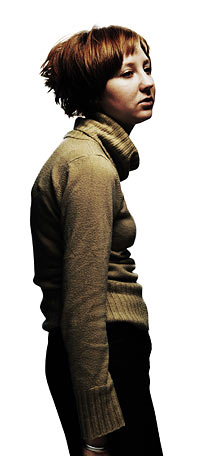
 |
|||||||||||

|
Upper-Cross Syndrome
Tight muscle:Pectoralis
|
 Poor Posture vs. Shoulders and Neck
Pain Poor Posture vs. Shoulders and Neck
Pain
One of the most common problems to sedentary workers is neck and shoulders pain. Most neck and shoulders pain are caused by bad posture whilst working at a desk or a computer – lean forward, hunching over the desk, rounding our shoulders. Or we crane our heads forward to better view the monitor. Over time, these activities tend to round our shoulders, stretching the back muscles and tightening the chest muscles. Even though bad posture may not cause any discomfort, continual poor posture will in the long term causes stress on the upper back, shoulder and neck and leading to soreness
In medical terms it is called “Upper-Cross Syndrome”. It refers to the upper part of the body, namely the neck/upper back/chest/shoulder areas. What happens in syndromes is that several muscle groups have become shorter and tighter. Other muscle groups have become weakened as a result of tight muscles. What happens then is these problem areas start a bad cycle - they each get worse, making the other worse also. More tight muscles and increased weak muscles. Upper cross syndrome consists of various tightened and weak muscles. The tight muscles include upper trapezius, the sternocleidomastoid (a large muscle in the front of the neck), the pectoralis major/minor and levator scapulae (a muscle at the back of the neck). The weakened muscles include rhomboid major/minor, deep neck flexors, middle and lower trapezius and the serratus anterior (a muscle at the side of the rib cage and going back to the shoulder blade). What can you do if you have the above syndrome(s)? Identifying the problem areas is important. Next, stretching and lengthening the tightened muscles is very important as is strengthening the weakened muscles. Suggestions: Gomukhasana (Cow Face) (only do the arms action) – To stretch pectoral (chest and front of shoulder) muscles 1. From any seating or standing positions. Keep the torso upright, shoulder blade in and down. Bring the right arm out to the right side, inward rotate the upper right arm so that your right palm facing out and the thumb facing back. Bend the elbow and bring the right arm up the center of the back. Palm facing out and fingers pointing up. 2. Outward rotate the upper left arm so that palm is facing upward. Bring the left arm up towards the ceiling, bend the elbow, bringing the left hand down the center of the back. 3. Hold hands behind the back and draw both elbows toward the center. Keeping the spine long and chest lifted.
4. Hold a strap between the hands if they do not meet behind the back.
Chaturanga Dandasana (Four Limbs Staff) – to strengtheni Rhomboid and middle and lower Trapezius Chaturanga Dandasana not only trengthens the above muscles, but also the arms, wrists and abdomen. Good preparation for more challenging arm balances, such as Bakasana and Eka Pada Galavasana.
1. From Plank position, firm the abdomen and bend the arms straight back, keeping the upper arms hugging into your sides. 2. As you exhale, lower down toward the floor, stopping when your forearms and upper arms are at a right angle. 3. Keep the whole body level with the floor. 4. Push back into the heels. 5. Keep breathing and hold for 5 seconds. 2 times a day. Gradually increase to hold this pose for 45 seconds. 6. Lastly, exhale and lower the body to the floor and rest.
Chaturanga Dandasana
Namaste,
Previous article 過往文章 2008年12月份文章 Ankle Sprain 預防踝關節扭傷 2008年11月份文章 Burn Knees and Flat Feet 2008年10月份文章 Coffee Makes You Stiff
|
Enquiry or booking: (852) 2522 0038 / e-mail yogaplace@hongkongyoga.com
Copyrights © 2024 Yoga Place | ALL RIGHTS RESERVED | Privacy Policy